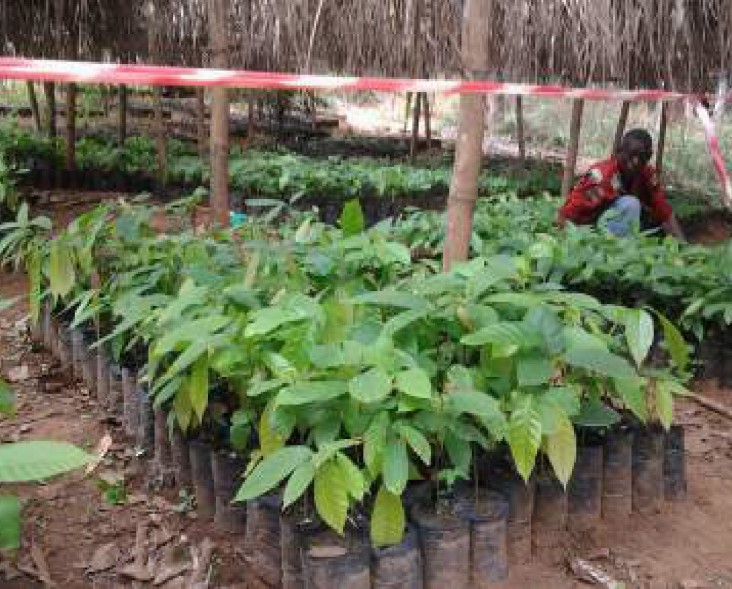
March 2016—Imagine living in one of the most biodiverse regions in West Africa, but not being able to reap the benefits of your environment.
For many years, Abou Traore and his neighbors found themselves in just this situation. But they recently discovered a way to productively use—and preserve—their surroundings.
Traore, a 57-year-old farmer, lives in the Doromou community of Guinea near Mount Nimba, a UNESCO World Heritage Site known for its remarkable animal and plant populations. He long relied on traditional agricultural practices that resulted in low yields and threatened the rich biodiversity around him. Opportunities beyond farming were limited and Traore and his family, like many in their community, depended on forest products and high-interest loans to survive.
Frustrated by continuing hardships, Traore realized he needed to do things differently. He turned to agroforestry.
Traore participated in an agroforestry project in 2012 that promotes forest conservation and sustainable natural resources management under USAID’s Sustainable and Thriving Environments for West African Regional Development program. As part of training in the Gbie community, near Doromou, Traore watched as two community oil palm plantations on 2.5 hectares were established in degraded areas of the Doromou Community Forest.
Under the program, the community of Doromou received 1,100 oil palm, 1,960 coffee, 11,885 rubber and 4,830 cacao tree seedlings—all high-value crops. But these crops are more than just sources of income for farmers: They help to repair soil quality by enriching it with their dead foliage and prevent further soil damage by limiting erosion from wind and rain. The crops also become animal habitats and provide other benefits to the ecosystem, such as serving as an important reservoir for carbon sequestration.
With training under his belt and seedlings in hand, Traore started practicing agroforestry. In 2014, he established a 64-hectare nursery in his village, with 9,000 cacao, 20 coffee and 60 oil palm tree seedlings. He recently sold around 8,000 new seedlings, earning 21 million Guinean francs ($3,000).
“The program has transformed my socioeconomic status,” says Traore. With his earnings he can now cover his family expenses and significantly invest in improvements to his nursery.
Traore has been quick to share his agroforestry experience with members of his community and others in the Mount Nimba area, spreading the word about the dual value of agroforestry. Not only does it increase incomes for people in the region, he points out, but it also increases the vegetation cover of degraded areas.
“Had it not been for this intervention, we would have continued to destroy our forests out of ignorance,” remarks Traore. “I am ... happy to see many people in my community very engaged in plantations. It is a hope for a brighter future.”
In Guinea and Cote d’Ivoire, the USAID Sustainable and Thriving Environments for West African Regional Development program has improved the management of more than 250 hectares of plantations, benefiting more than 290 households. It has also helped 20 communities to protect more than 300 hectares of community forests. The program, which runs from October 2011 to September 2016, conserves biodiversity in the Upper Guinea Forest ecosystems of Guinea, Sierra Leone, Liberia and Côte d’Ivoire.
LINKS
Follow @USAIDGuinea, on Facebook, on Flickr







Comment
Make a general inquiry or suggest an improvement.